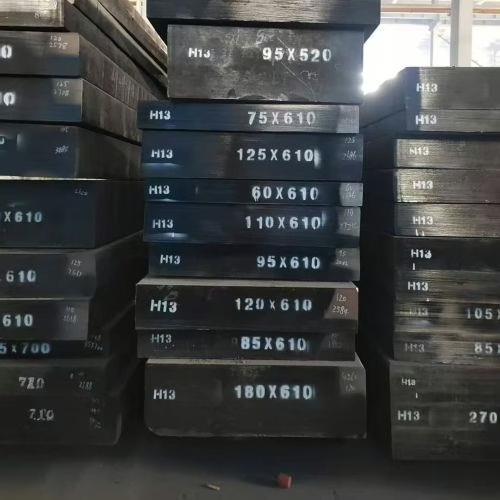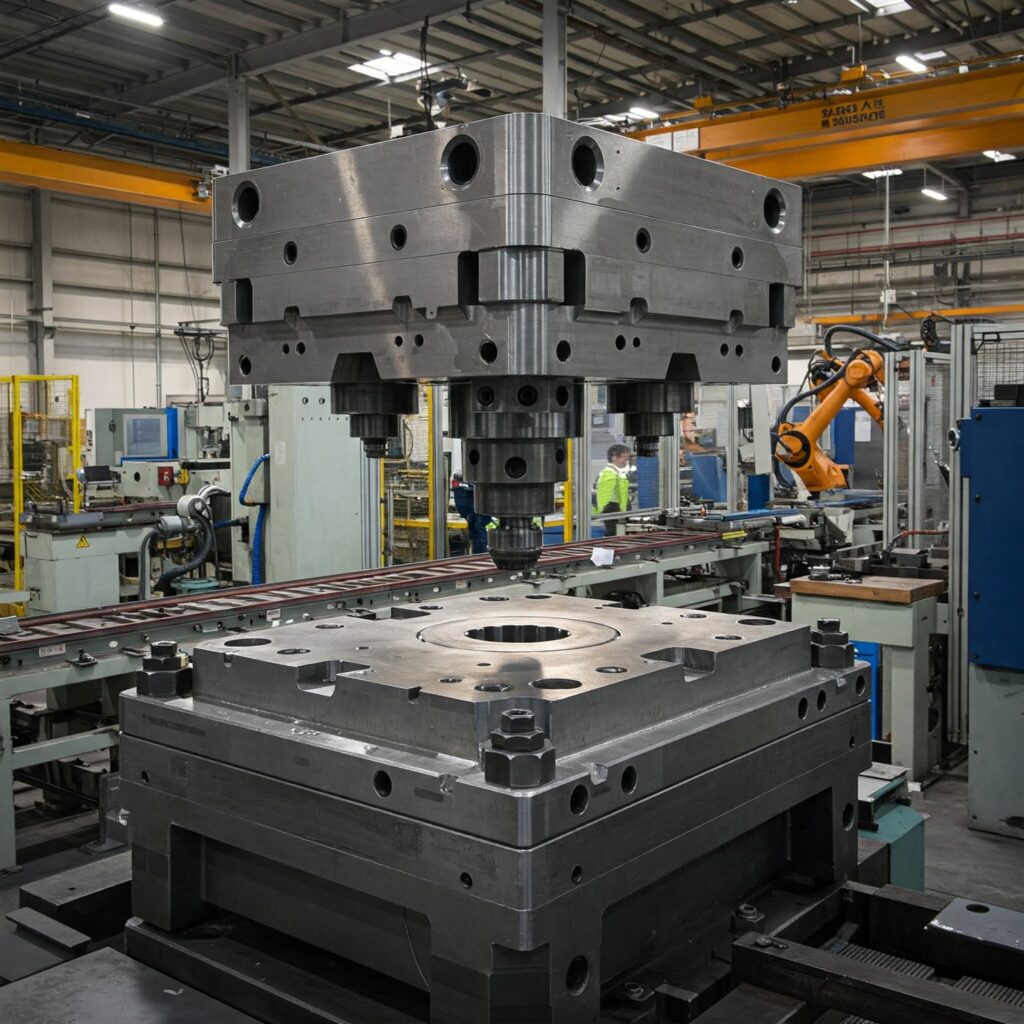Tempo estimado de leitura: 5 minutos
Principais conclusões
- H13 Tool Steel Machinability is influenced by several factors, including cutting tool materials and machining conditions.
- H13 is a high-performing hot-work tool steel with medium alloy content, particularly vanadium, enhancing wear resistance.
- Machinability in the annealed condition rates 70-75% compared to W1 tool steel, making it surprisingly lower than common structural steels.
- Hard machining techniques allow efficient operations on H13 in its hardened state, reducing reliance on grinding.
- Careful control of hardness, tool selection, and heat treatment is crucial for optimal machining results with H13 tool steel.
Índice
Aço para ferramentas H13 (UNS T20813, or DIN 1.2344) is a critical material in the aço para ferramentas de trabalho a quente industry. It combines high toughness, excellent resistance to thermal fatigue, and the ability to maintain strength at elevated temperatures. Based on these properties, H13 is widely used in the manufacture of die-casting molds, hot-forging dies, and plastic injection molds. To ensure optimal production efficiency and mold integrity, a thorough understanding and mastery of H13’s machinability is essential.
Machinability itself is a complex system characteristic. It is not solely determined by the material itself, but rather depends on the entire machining system. This includes the material and geometry of the cutting tools used, as well as specific machining conditions such as cutting speed, feed rate, depth of cut, and the selection of cutting fluid.
H13 Tool Steel: A Hot Work Powerhouse
H13 is a medium-alloy air-hardening steel commonly referred to in the industry as “5% chromium (Cr) hot-work tool steel.” Its primary alloying elements include chromium (Cr: 4.75–5.50%), molybdenum (Mo: 1.10–1.75%), and the critically important vanadium (V: 0.80–1.20%).
What distinguishes H13 from similar grades, such as Aço para ferramentas H11, is largely its relatively high vanadium content. The presence of vanadium promotes the formation of dispersed, hard vanadium carbides within the steel, significantly enhancing the wear resistance of H13.
For hot-work tool steels like H13, traditional approaches to improving machinability used for structural steels are absolutely prohibited. For instance, adding sulfur (S) or phosphorus (P) to ordinary steels is a common method to enhance machinability, but this is strictly forbidden in H13. Sulfur and phosphorus severely compromise the impact strength and fatigue resistance essential for the steel’s operation under high temperatures and pressures.

H13 Machinability Rating in the Annealed Condition
To facilitate forming and machining before heat treatment, H13 is typically supplied in the annealed condition. In the annealed state, H13 exhibits moderate machinability. If we set the machinability of annealed W1 tool steel as a 100% benchmark, then H13’s machinability is rated approximately between 70 and 75. Compared to free-cutting structural steels, it is important to note that this standard differs from that of free-cutting structural steels (such as B1112, which is rated at 100%). H13’s machinability is significantly lower than B1112 (for example, W1’s 100% corresponds to only about 30% of B1112). The maximum hardness of H13 in the annealed condition is typically specified within the range of 192-235 HBW.
Mastering Hard Machining of H13 Tool Steel
Traditional wisdom holds that H13 steel should be shaped and machined in the annealed state. However, rapid advancements in machining technology have made “hard machining” possible, enabling cutting operations to be performed on the material in its final hardened state. It has become common practice to perform “hard turning” and “hard milling” on H13 dies after heat treatment, when their hardness reaches up to 50 HRC. These hard machining techniques are suitable for alloy steels typically ranging in hardness from 50 to 70 HRC. The primary advantage of hard machining lies in its ability to replace or significantly reduce the grinding operations traditionally required.
Practice has confirmed that various hard machining methods can be successfully applied to H13 steel, provided highly specialized tool materials are used.
| Hard Machining Operation | H13 Hardness (HRC) | Tool Material & Results |
| Finish Turning | Average 52 HRC | Polycrystalline Cubic Boron Nitride (PCBN) tools provided superior surface finishes (Ra as low as 0.14 µm) when combined with high cutting speeds (up to 200 m/min) |
| High-Speed Milling | 47–50 HRC | Coated carbide tools, such as (Ti, Al)N-TiN inserts, successfully milled the steel. This process induced highly desirable compressive residual stress |
| End Milling/Grinding | 47 HRC | Gentle dry endmilling showed no evidence of microstructural alteration on the surface, performing similarly to grinding with a CBN wheel, unlike electrical discharge machining (EDM) |
| Drilling | 54–55 HRC | Coated carbide tools, such as (Ti, Al)N-TiN inserts, successfully milled the steel. This process induced highly desirable compressive residual stress. |
Factors Influencing H13 Machining Performance
To successfully machine H13 steel, whether in soft or hard conditions, the following critical factors must be carefully controlled:
- Hardness is the most critical material property affecting machinability. Generally, higher hardness results in poorer machinability. H13 steel contains hard alloy carbides, particularly vanadium-rich MC-type carbides. These carbides significantly enhance the material’s wear resistance but simultaneously pose direct challenges for tool selection.
- Tool selection varies significantly depending on the hardness state of H13 steel. For annealed H13, standard tool materials are generally sufficient. However, hard-machined H13 requires specialized tools. Examples include polycrystalline cubic boron nitride (PCBN) tools for finishing operations and coated carbide inserts for milling.
- The cutting process is significantly influenced by various process parameters, primarily including cutting speed, feed rate, and tool geometry. For example, when machining H13 steel at 52 HRC using PCBN tools, the cutting speed directly impacts the overall tool performance.
- Proper heat treatment control for H13 tool steel is critical. The quenching and tempering processes must be precisely controlled to ensure a balance between hardness and toughness in the finished workpiece. For more information, please refer to the H13 steel heat treatment guide.
Conclusão
To efficiently machine H13 tool steel, it is essential to understand its inherent high alloy toughness fully. Rough machining should be performed in the soft condition, while finishing operations should be conducted in the hard condition. This approach, combined with the use of appropriate specialized cutting tools, enables precise machining of H13 tool steel.


